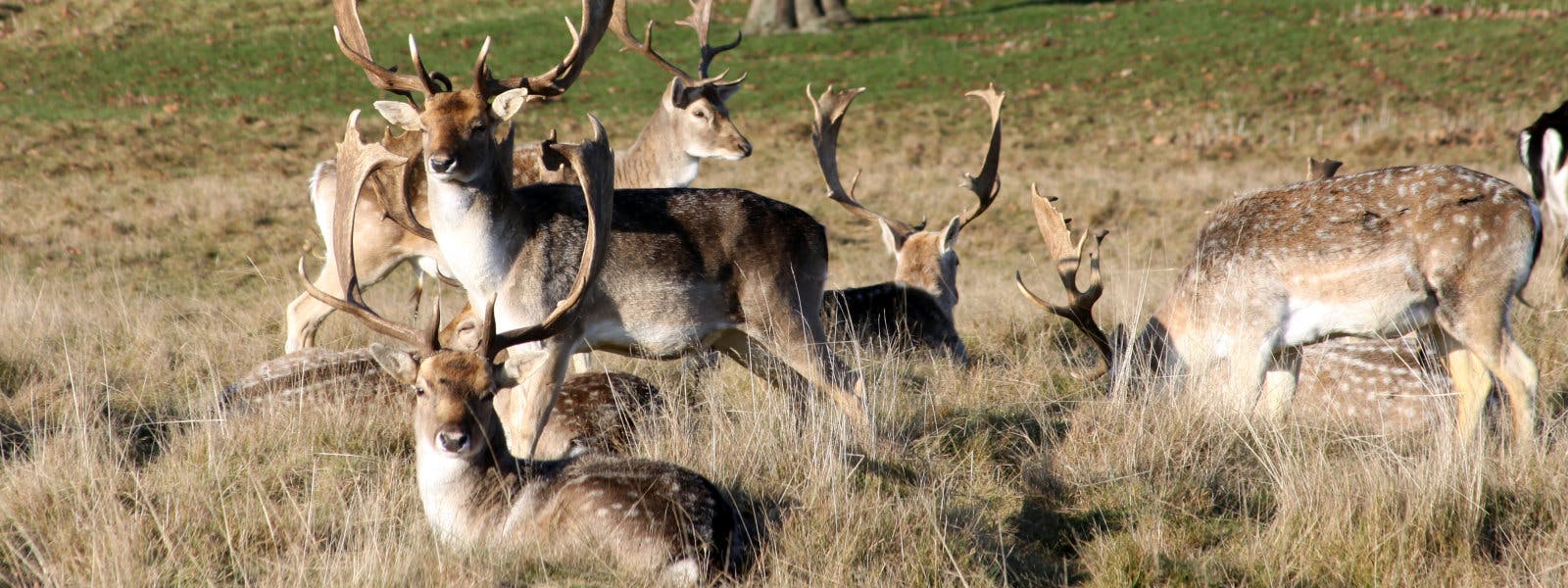
Home Park is a proudly appointed Site of Special Scientific Interest (SSSI)
Skip the event ticket details and go to event summary.
When
Daily 07:00 – 18:30 (October – March)
Ticketing information
Free
Buy Hampton Court Palace ticketsHome Park opening times:
07:00 - 18:30 (October - March)
07:00 - 20:00 (April - September)
About Home Park
Accessible from outside the main palace and gardens at Hampton Court is Home Park, also known as Hampton Court Park, which is a royal park that occupies 750 acres of ancient parkland, as stunning as it is diverse.
Supporting a remarkable mosaic of acid and neutral grassland, woodland and wetland habitats, our park is proudly designated a Site of Special Scientific Interest (SSSI). Here you can observe the deer herd, veteran trees, rare plants and endangered invertebrates.
See important information about visiting Home Park below.
Important information about visiting Home Park
Park regulations, legislation and policies help us to manage Home Park and balance the needs of different park visitors. Please find full details of park regulations and legislation on the Royal Parks website.
Fires and barbecues are strictly prohibited anywhere in Home Park and the Barge Walk.
Dogs in Home Park
Between 01 May and 31 July dogs MUST be on leads in all areas of Home Park.
During this season female deer are most vulnerable when they are carrying and giving birth to young. Female deer hide their young in long grass to conceal them from dogs and other perceived predators. Having your dog on a lead will reduce the risk of your dog coming close to an area where fawns are hidden.
- At all times of the year dogs must be under close control in the deer park
- Give deer plenty of space. Keep at least 50 metres from deer
- Keep out of long grass and stay on mown paths, this also prevents disturbance to ground nesting birds such as skylarks
- Clean up after your dog
Deer in Home Park
Never touch a newborn deer under any circumstances, even if it is on its own. It is not abandoned, and its mother will be grazing nearby.
Give deer plenty of space, keeping at least 50 metres away. Keep out of long grass and stay on mown paths, this also prevents disturbance to ground nesting birds such as skylarks.
Failure to comply may result in prosecution.
Veteran trees
There are several grand and enduring veteran trees in Home Park — the dominant species being Tilia (lime trees). These can be located within avenues, along boundaries and woodland areas. They are an ecosystem within themselves.
The park's veteran trees and deadwood habitat is home to endangered saproxylic invertebrates (invertebrates associated with deadwood), making our park a very exclusive neighbourhood!
A policy of continuous re-planting has kept the tree community thriving — with some trees over 100 years old.
Acid grasslands
The acid grasslands of Home Park are comprised of a diversity of plant communities, some rare and of scientific significance. Once widespread across the floodplains of the Thames Valley area, many of these plants remain today — making Home Park an important habitat.


